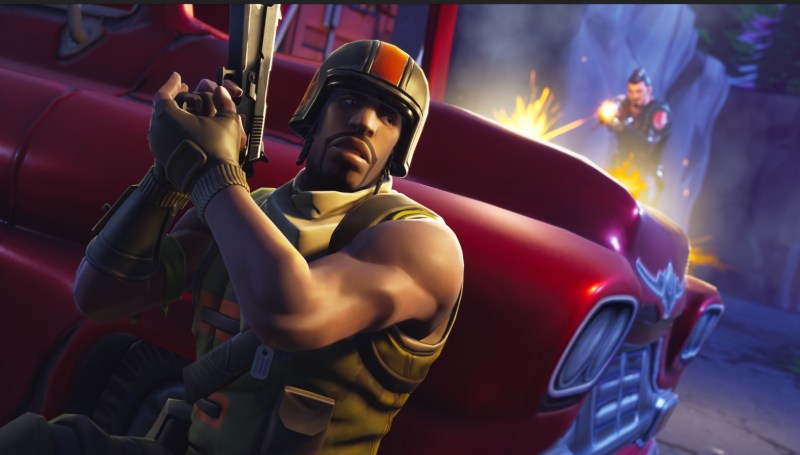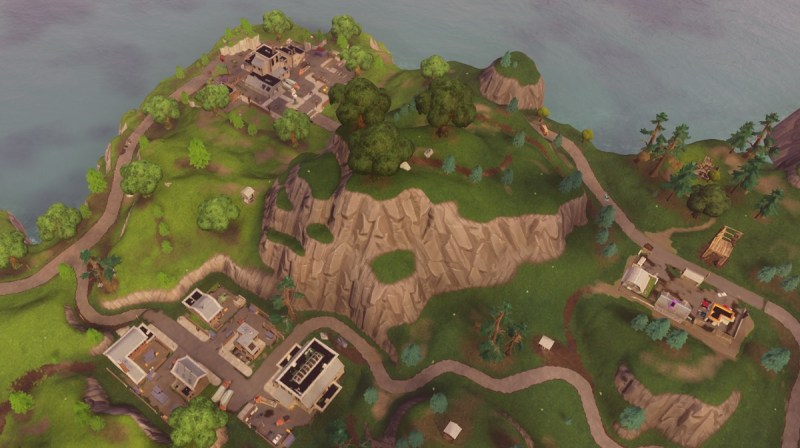GamesBeat: Fortnite really is just one game in that respect?
Libreri: Yes, one game. Through clever management of LODs and content, we’re able to push it out to all platforms. That proxy LOD system is a big part of making sure the environments scale down and work on the mobile hardware that we support.
GamesBeat: The theory that Unity had, not making games and not competing with its customers, do you think there’s a question mark there given what’s happened with Fortnite?
Libreri: Obviously we’re different companies that have different philosophies. But making stuff, making games, and having the engine team have access to great game teams – not just ourselves, but our customers as well – has a lot of advantages. We all speak the same language. We’re running a triple-A game on a phone. It’s pretty amazing that we can do that. I think it benefits all of our customers, and the players as well. People want to be able to play their game wherever they go, on whatever platform.

Above: Unreal Engine 4.2
GamesBeat: If you’re looking at what Fortnite benefited from as far as all the big advances that Unreal has made, what would you say Fortnite helped you do, or took advantage of in the engine?
Libreri: One thing is obviously that we had Paragon come before Fortnite. We put a lot of learning into getting the engine to be efficient for a complicated game like Paragon on console. Fortnite was immediately able to take advantage of that. The cartoony style as well, that rendering style in Fortnite adapts to all platforms pretty well. We put in better color management, better geometry management. We’ve put so many things in the engine over the years that have made Fortnite scale better than it would have done otherwise.
GamesBeat: What does Fortnite have that Paragon didn’t? Were there big advantages there?
Libreri: The big thing with Fortnite, which drove some features that a lot of our customers love, is that it’s a dynamic world. You can build. The concept of pre-computed lighting, the normal way that people do photorealistic lighting in games, isn’t possible. We have a bunch of these distance field rendering techniques that were added for Fortnite, and that’s benefited many games. Also, the fact that the battle royale mode of Fortnite is a 100-player game—we really had to go through our networking code and make it super efficient to be able to sustain such large gameplay teams.
GamesBeat: I notice that Fortnite doesn’t run on everything, though. It doesn’t run on an iPhone 6. Is it just the computing power of that device?
Libreri: Yeah, you’re just getting to compute levels that can’t sustain the game well. We want to make sure that everyone gets a great experience when they play the game. We could ship on it, but it wouldn’t be a great experience at all.
GamesBeat: What are you telling developers about where the road map is going from here?
Libreri: Honestly, this is the way we’ve been for a few years now. Every three or four months we put out a new version of the engine. Even new features, we demo them, so people can go up on Github and pick things as they’re emerging even before the dot release is usually out. We’re telling developers that we push this thing as quick as we can, and you have access to new features almost as quickly as we do.

Above: Mobile gaming art in Unreal
GamesBeat: Outside of Epic, what sorts of games are taking advantage of 4.19 and 4.20?
Libreri: Many developers on games that have yet to release take the latest version into critical content. We’re seeing lots of awesome usage of the cinematic tools, not just for cutscenes, but for a lot of adventure-type games. We’ve seen games that were running at 30 being able to go to 60 because of the optimizations in the engine. It’s a pretty open community. Unless you have a game you’ve been shipping for quite a while, people are pretty keen to take the latest update.
GamesBeat: How is Unreal doing on the VR front?
Libreri: There are still a lot of awesome developers doing UE4-based VR. In fact I’m just about to go visit my friends at Fable Studios this afternoon to check on their latest stuff. We’re seeing a lot of activity in the location-based VR space. I think that The Void has shown the way forward with the Star Wars: Secret of the Empire title that they put together with Lucasfilm. We hear a lot of buzz, a lot of people taking it very seriously. Our friends at Ninja Theory just did a project with The Void called Nicodemus, which is a sort of horror, scary—I don’t know if I’m up to the job. I’d probably have a heart attack. I’m sure that’s on 4.19.
GamesBeat: Outside of games, you were talking about movies and TV production. Is that an area where activity is picking up?
Libreri: In the enterprise space we’re seeing, across the board, the amount of different use cases for the engine now—obviously computer graphics changed the way that people design and visualize objects and products. All these companies in that space are starting to use Unreal. We have a great package that helps you translate scenes you’ve built in CAD packages or traditional DCC packages into Unreal Engine quickly. It’s called Datasmith. We’ve seen massive adoption across the board.
It’s not just things like architecture or car design. We’re seeing drug discovery companies using the engine to visualize how molecules fit together. We’re seeing a lot of AI companies training their AI using Unreal Engine. The sky is the limit. Anywhere that computer graphics or the knowledge of a physically plausible world is useful, we’re seeing massive adoption. It’s pretty exciting. Every day some new thing comes up.

Above: Level of detail in Unreal Engine 4.2.
GamesBeat: The success of Fortnite itself, does that come back and feed into the engine in some way? I’m sure you have a remarkable budget for hiring engineers.
Libreri: I don’t know about that, but we’re always looking for awesome talent.
Having something that engages at the level Fortnite does allow us to work on a little bit more in the way of out-there crazy ideas than maybe we normally would. One thing we were very committed to was this awesome way of being able to spectate what happens in games. That’s why we have the replay system in the engine.

